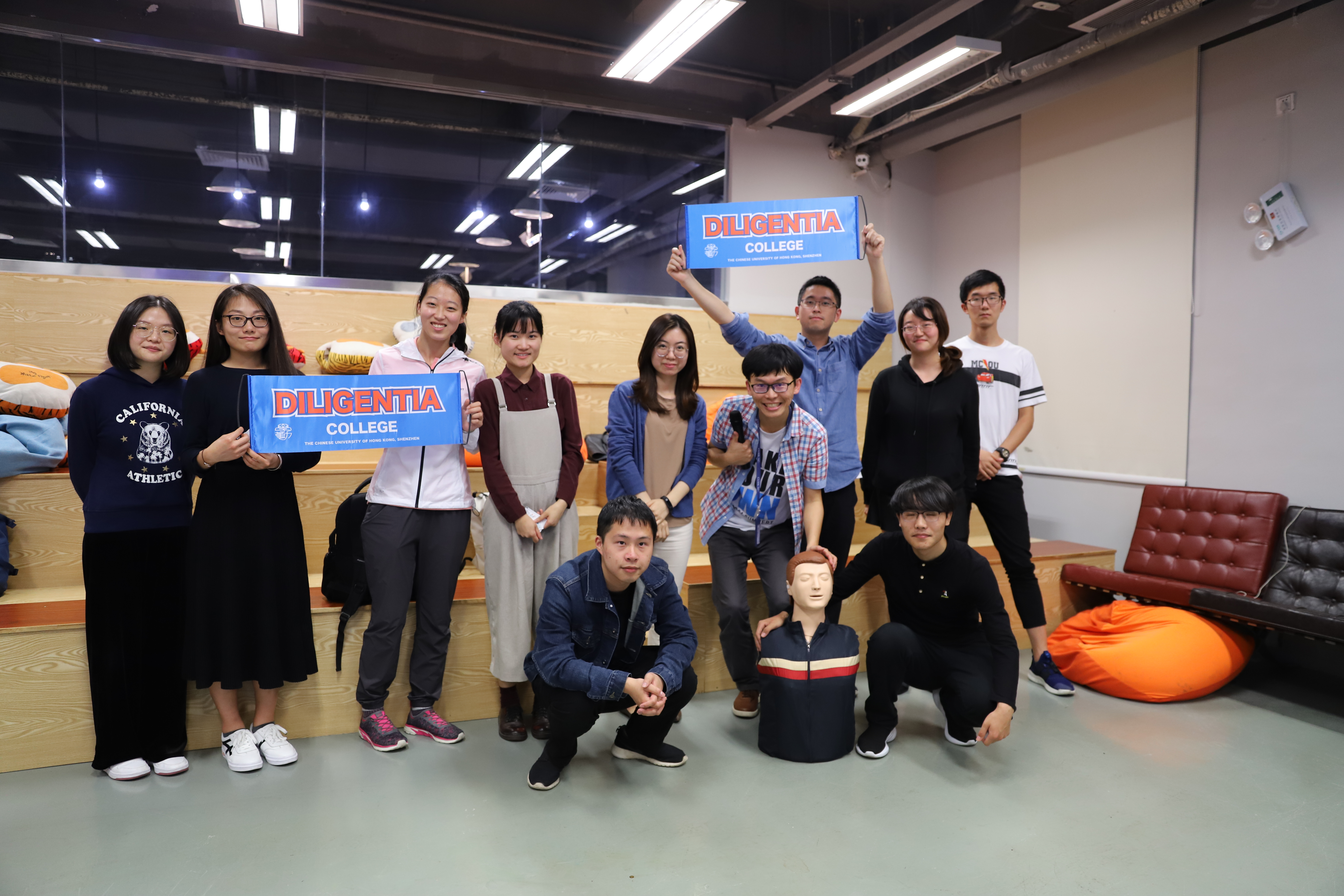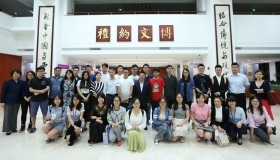The 19th Diligentia Night Talk: First Aid
Cardiovascular diseases are very common in our daily life. According to WHO, about 40 million people died from non-contagious diseases in 2015. Heart disease accounted for 45 % of the deaths. In 2016, heart disease and stroke were still the world's top killers, accounting for a far greater proportion of individual deaths than cancer and AIDS. The high mortality rate not only reflects the irrationality of modern lifestyle such as lack of exercise, unreasonable diet and excessive psychological pressure, but also highlights people’s urgent need for knowledge on first aid.

Before demonstrating CPR, Dr. Huang first explained the necessity of learning about CPR. Medically, in case of a sudden stop of breathing and heartbeat, the brain cells of the patient will start to be damaged if there’s no rescue within 4-6 minutes. If the first aid is not available within 10 minutes, irreversible damage to the brain or even death will be caused. In contrast, if both basic life-saving support can be provided within 4 minutes and advanced cardiac life-saving support is available in 8 minutes, it is quite possible to save a life at risk. Specifically, in face of cardiac arrest, if people at the spot can call for help, provide CPR, take AED (automatic external defibrillator), or offer advanced cardiac life-saving support as early as possible, the patient can be saved with good care after cardiac resuscitation. As Dr. Huang said, "In this chain of life-saving, both basic and advanced life-saving supports are very important. Before the ambulance arrives, if the basic life-saving support is not available, the patient will be on the verge of death. For non-professionals, it is necessary to acquire the first half of the life-saving chain – the basic life-saving support.

Ask: to check whether the person is conscious or not. If the person appears unconscious, tap or shake his or her shoulder and ask loudly.
Call: this step includes to call 120 for help and/or to get the AED in order to prepare for emergency medical service (EMS).
C: chest compressions should be given when the person is not breathing or is breathing abnormally. During the operation, cover the first hand with the heel of the other hand and interlock the fingers of both hands together. Keep your fingers raised so they do not touch the patient’s chest or rib cage. Press down on the chest about 5 to 6 cm and Repeat to give 30 compressions at a rate of 100-120 compressions per minute.
A: open the person's airway and prepare for the rescue breaths.
B: breath for the person. Prepare to give two rescue breaths one second time, and watch to see if the chest rises and falls. Thirty chest compressions followed by two rescue breaths is considered one cycle. Do 5 cycles (about 2 minutes). In addition, it is recommended to change hands every two minutes for high-quality CPR. The interval should be no more than five seconds.
D: electric shock. The defibrillator is used to shock the heart back to a normal beat.
If CPR is successful, the rescuer will see the person has spontaneous breathing, recovering skin color, and a return to consciousness.

After the explanation of principles, students started to practice one by one under the guidance of Dr. Huang. Different circumstances should be handled differently. In addition to getting familiar with the rescue procedures, we must assess the environment before CPR: Only after making sure that there is no danger of further injury to both the patient and the first-aid responders, can we take the next steps. Besides, in face of the situation of drowning, drug poisoning, severe trauma and children or infants under the age of 8, if there is only one person available in the place, he or she must do CPR for two minutes (five cycles) and then call for help. This is to maximize the possibility of saving life successfully. When saving other’s life, the rescuer had better wear a pocket mask and gloves to protect his or her own life. This interesting lecture is a required course for life. Students not only learned theoretical knowledge but also practiced and mastered CPR. It is a reliable safeguard for the lives of themselves and others. Everyone should understand that first aid should “start from the heart”.




